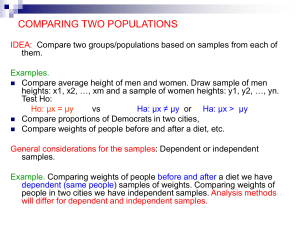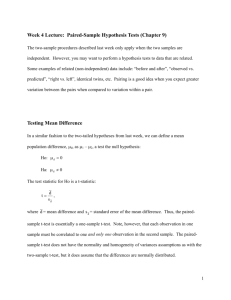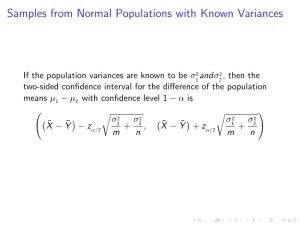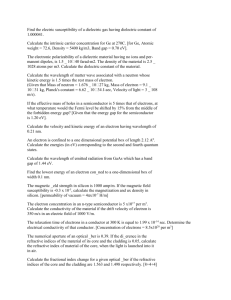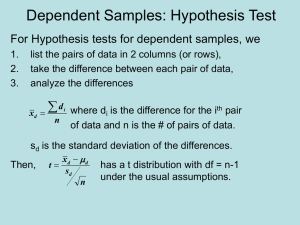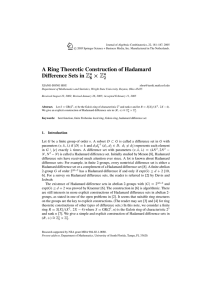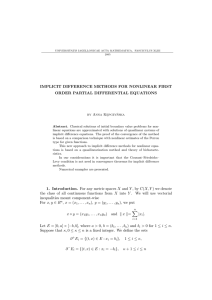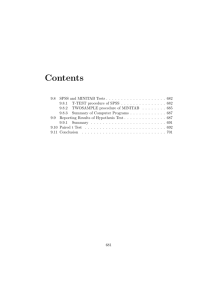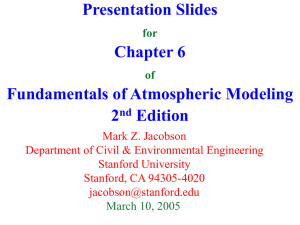Additional Lecture Material
advertisement
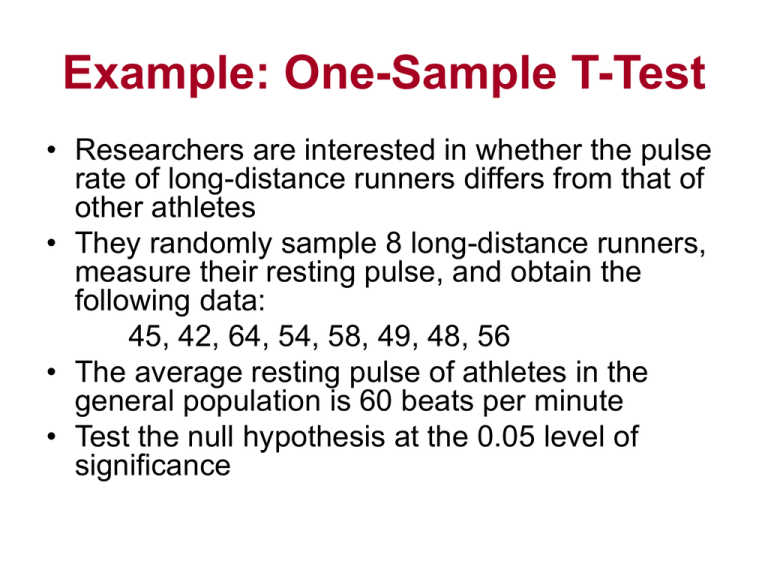
Example: One-Sample T-Test • Researchers are interested in whether the pulse rate of long-distance runners differs from that of other athletes • They randomly sample 8 long-distance runners, measure their resting pulse, and obtain the following data: 45, 42, 64, 54, 58, 49, 48, 56 • The average resting pulse of athletes in the general population is 60 beats per minute • Test the null hypothesis at the 0.05 level of significance Example: One-Sample T-Test HO: Pulse of long-distance runners = 60 HA: Pulse of long-distance runners differs from 60 • • • • • • Mean = 416/8 = 52 SS = 374; s2 = 53.4; s = 7.3; SE = 2.6 df = 7 t = (52-60)/2.6 = 3 tcrit (from table) at alpha of 0.05 = 2.365 Reject null hypothesis. There is a difference Paired T-Test • Used when two samples are not independent of each other • Observations in one sample can be paired with observations in the other sample • For example: – Before and after observations on the same subjects – A comparison of two different measurements or treatments on the same subjects Paired T-Test: Procedure • Calculate the difference (di = yi − xi) between the two observations on each pair, making sure you distinguish between positive and negative differences • Calculate the mean difference • Calculate the standard deviation of the differences (sd) and use this to calculate the standard error of the mean difference • SE = sd / n • Calculate t = d / SE • Degrees of freedom = n − 1 • Use Table B.3 to obtain tcrit Example • Four individuals with high levels of cholesterol went on a special diet, avoiding high cholesterol foods and taking special supplements. Using the .05 level of significance, was there a significant decrease in cholesterol level? • Their total cholesterol levels before and after the diet were as follows: Before After 287 255 305 269 243 245 309 247 Example Before 287 305 245 309 After 255 269 243 247 Difference 32 36 2 62 132 (Total) Mean difference = 132/4 = 33 Standard deviation = 1812/3 = 24.6 Standard error = 12.3 t = 33/12.3 = 2.683 df = 3 tcrit = 2.353 (one-sided test at α = 0.05) Reject null hypothesis d-d 1 3 31 29 (d-d)2 1 9 961 841 1812 (SS) CI for Difference in Means • Recall example of verbal skills in 8-year boys and girls C. I. = X1 – X2 tcrit (SX1 – X2) • tcrit = 2.878 for α =0.01 • 99% CI = 37-31 ± 2.878(2) = 6 ± 5.756 = (0.244; 11.756) • This interval does not include zero, therefore there is a difference between boys and girls
